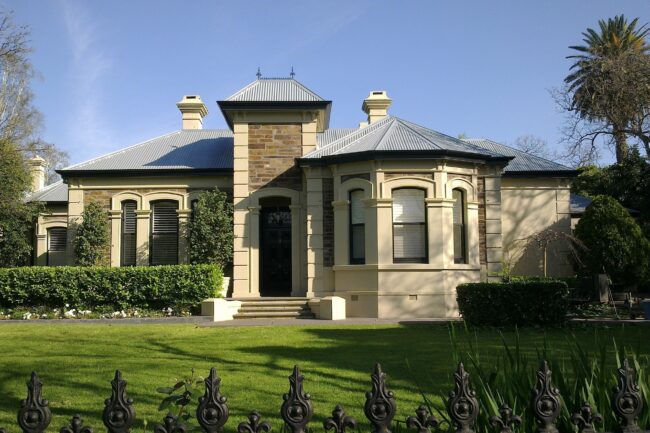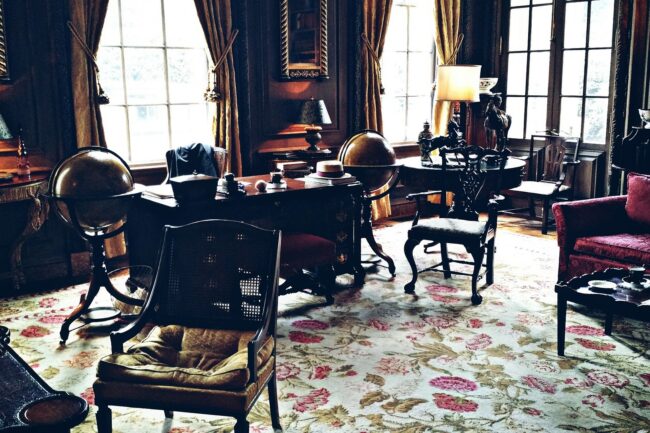
A beautifully preserved property that makes moving to an older home enjoyable.
Moving to an Older Home? Here’s How to Preserve Its Charm and Character
Embarking on the journey of moving to an older home signifies stepping into a world rich in history and character. These vintage dwellings possess a unique allure, but they also come with their own set of challenges and opportunities. So, let’s explore the intricacies of preserving the character of your older property, ensuring that its legacy continues to shine.
Research and inspection
Before you improve your home, conducting thorough research and inspection is paramount. This initial step ensures you’re well-informed about your older property’s unique characteristics and potential issues. Begin by delving into its history, unearthing fascinating stories that may guide your preservation efforts. Simultaneously, enlist a qualified home inspector to scrutinize the property meticulously. Their expertise will reveal any hidden structural problems or safety concerns. This research and inspection phase equips you with essential knowledge, allowing you to make the right decisions when moving to an older home.
Embrace the original features
Embracing the original features of your older property is essential, especially when you’re doing exterior upgrades. Preserving architectural details like ornate moldings, elegant trim, and unique historical elements maintains the home’s character and also enhances its curb appeal. For example, when refinishing weathered hardwood floors and restoring them to their former glory, you breathe new life into your home’s interior. Additionally, rejuvenating antique fixtures and hardware adds a touch of vintage elegance. These efforts ensure the property retains its timeless charm while blending seamlessly with modern living.

You should strive to maintain and preserve the original charm of the house!
Updating for modern comfort
Updating your older property for modern comfort is crucial to preserving its charm and functionality. Assessing its energy efficiency ensures that you’re both cozy and eco-friendly. Upgrading insulation and windows improves comfort and lowers energy bills. Furthermore, replacing outdated plumbing and electrical systems ensures safety and reliability. So, by carefully modernizing these essential elements, you can enjoy the conveniences of the 21st century while still honoring the historical character of your property.
Historical paint and color schemes
Choosing historically accurate paint colors can breathe life into faded walls, capturing the essence of the era in which your house was built. Techniques for uncovering original paint or wallpaper can reveal hidden treasures, offering a glimpse into the past. The right color palette can also significantly impact your home’s character, whether you’re restoring Victorian opulence or mid-century modern simplicity.
Period-appropriate furnishings
Sourcing antique and vintage furniture that complements your home’s era can transform it into a refined property. Blending modern and period pieces allows you to maintain functionality without compromising authenticity. Restoring and repurposing old pieces can add character and uniqueness to your interior design. With the right furnishings, you can create a home that honors history and offers comfort and style. It’s the fusion of the past and present that makes your living space truly exceptional and inviting. Of course, just like when hiring movers for family heirlooms, you want to ensure safe transfer with the pros if you’re handling valuable old furniture!

You can make your house feel like a true trip to the past with all the modern conveniences!
Landscaping and curb appeal
Enhancing your property’s curb appeal through landscaping is always a priority. After all, maintaining and enhancing the home’s exterior boosts its visual appeal and preserves its historical significance. However, it’s not always easy when you’re dealing with historical properties. For example, carefully choosing plants and landscaping features in line with the era of your home is necessary. By preserving original pathways, garden elements, and architectural details, you also pay homage to the past while ensuring a harmonious transition between your property and its surroundings. The curb appeal of your older home sets the stage for what lies within and reflects your care and appreciation for its history!

Try to stick to the historical landscaping of the property!
Historical documentation
Documenting the history of your property is a fascinating and useful process. By researching the home’s history and previous owners, you uncover stories that add depth to your connection with the property. Documenting any discoveries made during renovations, such as hidden artifacts or architectural details, also helps preserve the home’s unique character. Creating a historical record is not just for your enjoyment, as it also safeguards the legacy of your property for future generations.
Preservation societies and resources
Engaging with preservation societies and tapping into their resources is one of the best moves when moving to an older home. These local historical preservation organizations are treasure troves of knowledge, offering guidance, support, and a network of like-minded individuals. They provide access to grants and resources that can significantly aid in restoring older properties. Networking with others who share your preservation commitment is also informative and deeply rewarding. It’s a chance to exchange ideas, learn from one another’s experiences, and collectively contribute to preserving the historical fabric of your community!
Balancing preservation and modernization
Striking the delicate balance between preserving the historic charm of your older home and modernizing it for contemporary living is akin to a carefully choreographed dance. It’s crucial to make the right decisions; otherwise, you risk making renovation mistakes you can’t undo. Start by assessing which elements are worth preserving and which require modernization. Ensuring safety and comfort is paramount, too, so be mindful of updates to plumbing, electrical systems, and insulation. Modern conveniences can seamlessly coexist with historical character if chosen thoughtfully. Ultimately, it’s about retaining the soul of your older home while enhancing its functionality for your family’s needs.
Budgeting for renovations
Start by estimating costs for preservation and restoration, considering every aspect, from materials to labor. It’s also essential to be prepared for unexpected expenses that often arise during older property renovations. Prioritizing projects based on urgency and impact also helps you allocate your budget effectively. Remember that older homes may require ongoing maintenance as well. So, set aside funds for future upkeep. Be diligent in tracking expenses and adjusting your budget as needed to stay on course!
Making your story part of an older property
Embarking on moving to an older home is a choice to cherish and honor the past while creating a unique future. By preserving its charm and character, you ensure that the legacy of your property endures, a testament to the enduring beauty of history. And as you settle into this vintage abode, you become part of its story, adding new chapters while preserving its timeless appeal for generations to come!

